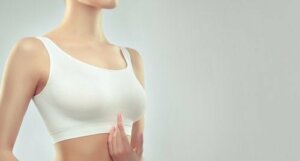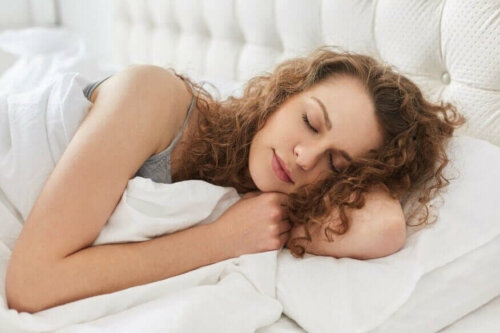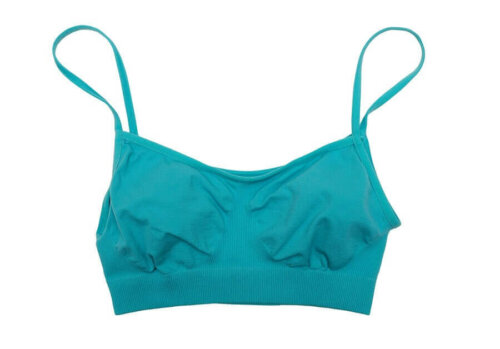The Amazing Benefits of Going Braless to Bed


Written and verified by the doctor Nelton Abdon Ramos Rojas
Some women tend to experience discomfort when going to sleep. One of the most common ones has to do with a feeling of oppression in their breasts as these must be supported not to sag. Often, they refer to the feeling that each breast is going in a different direction and that it creates an uncomfortable sensation. Thus, at some point, you may wonder whether wearing a bra at night is a good idea or not. Continue reading to find out what are the benefits of going braless to bed.
The health benefits of going braless to bed
Sleeping with a soft and comfortable bra can be good for some women. However, there are those who do without it because they’re more comfortable.
From their point of view, not wearing any clothing – not even a soft bra, specially designed for sleeping – can help them rest better than wearing a bra to bed. In fact, they emphasize that the body can relax more easily by not exerting even the slightest pressure.
In the end, the decision depends on each woman and what she considers best for herself.
We recommend 9 foods that help prevent breast cancer

Going braless to bed improves your circulation
Women with cardiovascular and fluid retention problems usually dispense with the use of this garment to avoid waking up at night, uncomfortable, noticing pressure marks around their torso, and on their back. In short, they think the garment hinders circulation and it’s a nuisance more than a benefit.
The discomfort caused by having a pressure mark in that area can be overcome during the day. However, most women take off their bra for a while to relieve it as soon as they have a little privacy.
Even when wearing the right size and a comfortable bra model, it’s often unavoidable to experience certain discomforts (usually temporary). It’s for this reason that breaks are important and necessary.
The length of the break depends on each woman’s preferences. Some do it for a while during the afternoon, at the end of their day. Others take it all the way to the next morning. Everyone chooses what they consider best for them.
The marks on the torso aren’t always produced by the simple use of the garment as such, but by the posture adopted when wearing it.

See also Tips for Beautiful Breasts
Other surprising benefits of going braless to bed
As you can see and according to some popular beliefs, the surprising benefits of going braless to bed revolve around the prevention of breast and back pain, as well as difficulties with blood circulation.
It’s also common to hear that, when you don’t wear a bra, you avoid fungal infection in the nipples. The logic here is there’s no fabric to make the breasts sweaty. Thus, there’s no accumulation of moisture.
Sleeping bras could be a good option
Generally, sleeping bras consist of a single piece of soft, elastic fabric (lycra) with straps that help support the breasts, without exerting too much pressure. They usually have ergonomic foam pads incorporated, for greater comfort. Some models have a certain resemblance to sports tops.
The idea of wearing this type of bras at night is to get better rest while keeping the breasts from sagging and moving to the sides of your body. That is they stay in a fixed position but are comfortable enough not to keep you from sleep. Also, they don’t cause low back pain.

So, wearing a bra to bed can have some health benefits because it keeps the breasts from going to the sides. This is because it prevents the discomfort caused by this kind of displacement. It also relieves the discomfort in the middle of the chest and at the same time keeps the breasts in one place so there are no sudden movements.
The sleeping bra isn’t the same as the one you wear every day. In fact, this is a piece designed for resting comfortably. It doesn’t have metal rings or tight seams. Therefore, one can say is a comfortable suitable option for rest.
To wear a bra or not the wear a bra? What do doctors say?
Health professionals advise doing what’s most comfortable for you. If this involves wearing a soft bra, specially designed for sleeping, then go ahead. And if it consists of sleeping without any garment, then go ahead too. The most important thing is for a woman to feel comfortable and able to rest.
If you wear a bra during the day and want to rest at night, then take it off.
In addition, if there’s any concern about the sagging of the breasts in relation to age, take into account that, in some cases, it may be best to wear a soft bra at night, without underwire, or rigid materials or seams that are too tight to the body.
Important note: SaludSinBulos experts indicate there’s no evidence that the use of an underwired bra or of certain colors (such as black), or for prolonged periods of time, might be related to the development of breast cancer. Therefore, using it doesn’t pose a health risk.
All cited sources were thoroughly reviewed by our team to ensure their quality, reliability, currency, and validity. The bibliography of this article was considered reliable and of academic or scientific accuracy.
- Yao, X., Ni, S., Zhou, J., Hu, H., Li, L., Wan, F., … Chen, Y. (2012). [A case-control study on risk factors of female breast cancer in Zhejiang province]. Zhejiang da xue xue bao. Yi xue ban = Journal of Zhejiang University. Medical sciences, 41(5), 512–518.
- Risius, D., Thelwell, R., Wagstaff, C. R. D., & Scurr, J. (2014). The influence of ageing on bra preferences and self-perception of breasts among mature women. European Journal of Ageing, 11(3), 233–240. https://doi.org/10.1007/s10433-014-0310-3
This text is provided for informational purposes only and does not replace consultation with a professional. If in doubt, consult your specialist.








